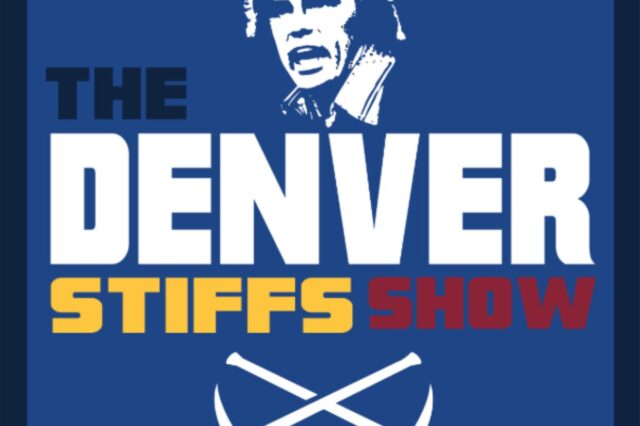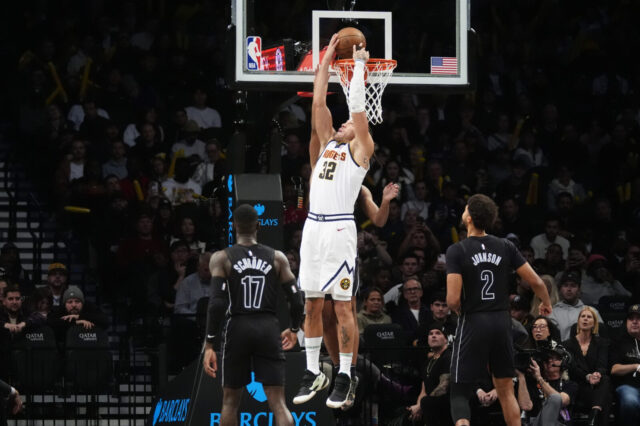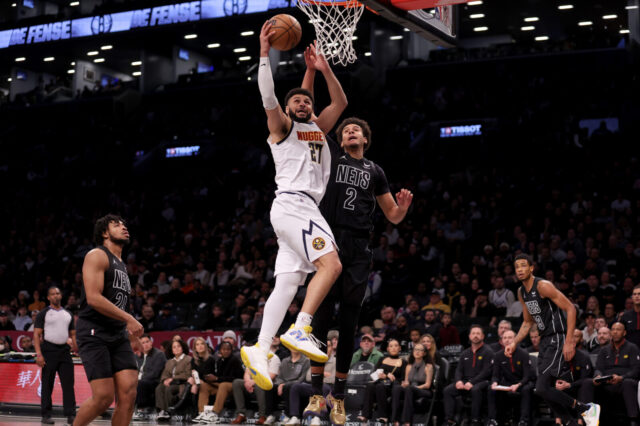On Monday, I wrote an article detailing various scenarios involving the Denver Nuggets acquiring a draft pick in the 2019 NBA Draft. From sending another team cash considerations to add a later second round selection, to trading current players and/or future picks to possibly add a first round selection, there are a variety of ways for the Nuggets to get involved if that is the desire.
For that to happen though, the Nuggets have to really like the player they select. Last offseason, the Nuggets traded their 2019 first round pick knowing they didn’t have a second round pick to utilize either. Is it possible that the Nuggets don’t believe they need to add any new pieces to the puzzle given Michael Porter Jr. and Jarred Vanderbilt didn’t play during the 2018-19 season? Absolutely. Could it also be that the Nuggets don’t place a high value on the 2019 draft class and the possible selections they could have made? Sure.
The narrative surrounding the 2019 draft class is that it’s a pretty weak class overall. There’s Duke power forward Zion Williamson, and then there’s everyone else. Many will group Murray State point guard Ja Morant and Duke wing RJ Barrett in with Williamson, but they have a number of questions, and many smart people have some doubts about their skill sets and continued ability to grow. Even beyond that, the depth in this class is very weak. There are starting caliber players to be sure, but very few players stand out as guys that teams can be sure will still be in the league in 2030, having had a long career.
But there are some gems scattered throughout the class, players who project as role players that could excel if they find the correct situation. I liken this draft to the 2012 and 2016 draft classes. There were clear studs at the top (Anthony Davis, Ben Simmons, Zion Williamson) and some projectable starters with star potential (Bradley Beal, Damian Lillard, Brandon Ingram, Jamal Murray, Ja Morant, RJ Barrett), but the bulk of the class will be made up of role players. In 2012, Tomas Satoransky, Jae Crowder, Draymond Green, Khris Middleton, and Will Barton were all drafted in the early second round. In 2016, Malik Beasley, Caris LeVert, Pascal Siakam, and Dejounte Murray were all drafted in the late first round. Malcolm Brogdon was selected 36th overall.
If you know who to pick in the 2019 draft class, you can find a gem at almost any part of the draft, at least where it’s currently projected.
Before getting into the draft though, the Nuggets must identify what they need. It wouldn’t make sense to trade an asset or a player or spend money on a draft pick and selecting somebody that they don’t need on the roster. Here are the four primary needs I have outlined for Denver heading into the offseason:
- A tall wing player with defensive skills that can either space the floor offensively or offer playmaking for others
- A versatile power forward with defensive skills who could replace Paul Millsap in the future
- A third center that can space the floor and offer length defensively
- A third point guard that can offer length and versatility defensively to go with some playmaking skills
Role players selected late in the draft must offer something the current roster doesn’t have in order to provide true value. Having the option to play a number of different ways, from adding more capable shooting to adding an extra passer to loading up on competent defenders, helps teams go from good to great. Jamal Murray and Nikola Jokic are the foundation in Denver, but the pieces around them could vary from season to season or even game to game based on how best to maximize the team. I have compiled a list of players that would fit Denver reasonably well and potentially offer a real boost. These players possess a skill set that the current roster doesn’t have or may not have in the future.
Without further ado:
1. Brandon Clarke, PF – Gonzaga
Kicking off the list is Brandon Clarke, quite possibly the best defensive player in the entire draft class with excellent shot blocking instincts from the power forward position. He led the entire NCAA with 117 blocks, averaging 3.2 per game and showcasing elite movement on the perimeter as well. His Player Efficiency Rating of 37.2 was second behind only Zion Williamson, and his effective field goal percentage of 69.3% trailed only Zion as well. He’s not just a defender.
Clarke is quite possibly the best fit with Nikola Jokic in the last three draft classes. On top of strong defensive instincts and above the rim athleticism, Clarke possesses a developing offensive skill set and basketball intelligence enough to operate around the paint while Jokic stays at the top of the key. His ability to play from the short corner and even dribble out of a closeout on occasion would generate numerous A+ shot attempts offensively.
And like I said, the best defender in the draft. If there’s a player the Nuggets should draft with the hope of replacing Paul Millsap as the starting power forward in the next couple of seasons, Clarke is the guy. He led the NCAA in offensive rating AND defensive rating. Every draft expert at The Ringer grades Clarke as a top 10 player in this class, yet the ESPN mock draft projects Clarke to be selected 14th overall by the Boston Celtics.
2. Grant Williams, PF – Tennessee
Williams has become one of my favorite prospects. He just does a little bit of everything a little bit smarter than everyone else. After averaging 18.8 points, 7.5 rebounds, and 3.2 assists for a strong Tennessee squad, Williams won his second SEC Player of the Year trophy, doing it all.
The Ringer staff pegged Williams as more of a PJ Tucker type, but I see him as closer to Paul Millsap than Brandon Clarke (who was also compared to Millsap). Still, Williams has the smarts, the know-how, and the skill to stick as a starting power forward in the NBA. ESPN projects Williams to go 32nd this year, which is bizarre for a smart, versatile, and skilled player of his caliber.
3. Cameron Johnson, SF – North Carolina
Johnson is perhaps the prototype of a player who can help the Nuggets for 10 to 20 minutes per game off the bench as a pure shooter. At 6’9, Johnson shot 46% from three-point range, extending far beyond the college three to take advantage of his high release.
While shooting is his best skill, Johnson is also a smart cutter and can drive to the rim with the ball in his hands. With a 64.8 True Shooting % against ACC play, Johnson was one of the only guards/wings in a major conference to display such a high level of efficiency. He’s a smart player, and the Nuggets could use as many smart players that are in between 6’6 and 6’10 as they can get.
4. Matisse Thybulle, SG – Washington
Meet the best perimeter defender in college basketball. Thybulle is a straight up bully, averaging 3.2 steals per game and earning two Pac 12 Defensive Player of the Year trophies over the last two seasons. Oh, and he averaged 2.3 blocks per game this past season too.
The offense is a work in progress, and at 6’6 and 200 pounds, he may not be the perfect size to defend the top wings and forwards in the NBA. Still, he’s a hard worker, has elite defensive instincts, and would improve Denver’s defense in almost any situation. He can switch onto point guards and would willingly defend any opposing perimeter player. He has Torrey Craig’s mentality with potentially more athleticism and a higher ceiling for offensive contributions.
5. Chuma Okeke, SF/PF – Auburn
At 6’8 and 230 pounds, Okeke is the prototype size to play at the forward position in between Jamal Murray, Gary Harris, and Nikola Jokic. In addition, his skill set blends perfectly around those three. With a 7’0 wingspan and willingness to do the hard things defensively, Okeke has the potential to develop into a rare breed of 3&D forward. Guys like Robert Covington, Otto Porter, and Jaylen Brown are extremely rare, but Okeke is as solid of an option to replicate that skill set as anyone in the draft.
While shooting 39.1% in college during his two years at Auburn, Okeke added some defensive versatility and playmaking to his game. The result was an improved performance at the SEC and NCAA tournaments, averaging 2.6 steals per game, helping Auburn advance before tearing his ACL against North Carolina.
The Nuggets have experience letting players recover from injuries before hoping they can contribute in the future. If they have confidence in Michael Porter Jr., Jarred Vanderbilt, and Juancho Hernangomez holding down the fort while he recovers, then they can let Okeke rehab his injury slowly and potentially mine a diamond in the rough.
6. PJ Washington, PF – Kentucky
Washington contributed well to a Kentucky team in his sophomore season, filling a similar role as Okeke and Williams this year. He’s a talented player and skilled at finishing around the rim with either hand. Washington’s good at everything, but he doesn’t have a true elite skill out of college. He’s reasonably efficient and shot the ball well, but the free throw percentage is a solid indicator that he isn’t a 42% three-point shooter in reality. His defense is solid, but not game changing. He can be a playmaker, but not an elite one.
Still, a blend of skills with the possibility to exceed expectations is not a bad place to start.
7. Talen Horton-Tucker, SG/SF/PF – Iowa State
Horton-Tucker is an enigma of sorts, but one of the most unique players in the entire draft. At 6’4 and 235 pounds, THT is built like a tank, except this tank can really pass. He’s like Zion Williamson if Zion was three inches shorter and had average athleticism. Late in the draft, this could be a steal though. Finding players with positional versatility that can switch on defense is extremely difficult. THT’s shot was a mess at Iowa State, but he can develop that part of his game while showcasing the skills necessary to come off the bench in the NBA. He doesn’t have the right build that scouts look for, but that’s caused him to drop further than his skills should warrant.
8. Keldon Johnson, SF/PF – Kentucky
At 6’6 and 216 pounds, Johnson is slightly undersized to be able to switch onto some power forwards in the NBA. Don’t let that fool you though, since he has the tenacity and toughness to prevent easy baskets around the rim. He doesn’t generate a ton of blocks, but he played at small forward for most of the season at Kentucky. This allowed him to work on his perimeter game, which is solid for a player of his size. He’s a good shooter with clean mechanics and can shoot off the catch or off pull-up jumpers.
9. Eric Paschall, PF – Villanova
Villanova cranks out capable role players every year. Josh Hart, Jalen Brunson, and Mikal Bridges all came from the school that was the 2018 NCAA National Champions, and Paschall started at power forward on that squad. He’s a capable offensive player, and when his role increased in his senior season, he didn’t disappoint. The efficiency dropped moderately, without the spacing and elite point guard play, but don’t that fool you. Paschall is skilled and has displayed great touch around the basket in past seasons. Playing off of Nikola Jokic and Denver’s scoring guards would allow him more freedom to hit shots he’s comfortable taking.
10. Jontay Porter, PF/C – Missouri
The younger brother of current Nuggets player Michael Porter Jr. may be just as talented. With Michael attending to Missouri, Jontay decided to reclassify to the 2018 class in order to play with his brother. That didn’t happen, but Jontay displayed many of the skills of a playmaking big man in the mold of Nikola Jokic. Unfortunately, Porter tore his ACL and re-aggravated the injury while rehabbing, so the NBA world never got to see him in his sophomore season. He will drop in this draft though. He’s currently pegged at 42nd overall in the ESPN mock.
Like with Chuma Okeke, the Nuggets have experience allowing players time to rehab and get healthy before seeing what they can do. With Mason Plumlee under contract for one more year, the Nuggets could let Porter learn from both Jokic and Plumlee before letting him compete for the backup center spot in 2020.
11. Dylan Windler, SF – Belmont
Windler is another older shooting forward in the same mold as Cameron Johnson. Measuring at nearly 6’8 at the draft combine, Windler projects to be a role player in the right situation. He’s a 40.6% three-point shooter across four seasons at Belmont, and his 76.1% career free throw shooting would imply that he’s at least close to that level of shooter in the NBA. He displays solid rebounding and passing instincts, but the shooting will be key at the NBA level.
If the Nuggets need a long term replacement for Juancho Hernangomez, or Porter isn’t ready to contribute, or they just want another wing shooter, Windler could be their guy in the second round.
12. Charles Matthews, PG/SG – Michigan
Matthews recently made the news last week for unfortunately suffering a torn ACL during a pre-draft workout with the Boston Celtics. He’s not a strong enough prospect to be guaranteed a spot in the first round despite this, but he has his positives for sure. At 6’6 with a 6’9.5 wingspan, Matthews showcased elite defensive potential at the guard and wing positions. He was a strong rebounder for his position, played a great team defense concept, and started on a Michigan team that went to the Sweet 16.
The offense is a work in progress, but the Nuggets have the depth and talent to let him develop on his own pace. Jamal Murray and Monte Morris aren’t going anywhere for awhile, but having a 6’6 guard off the bench to blitz opposing teams and give those two guys some rest during the regular season isn’t a bad thing.
13. Nicolas Claxton, C – Georgia
The Ringer describes Nic Claxton as possessing shades of Al Horford and Mason Plumlee, and they aren’t off base at all. At Georgia, The nearly 7’0 tall Claxton took turns running point guard for an undermanned Georgia squad. When he wasn’t surprising opposing defenses by driving with the ball in his hands, he was showcasing a skill set that features a three-point shot that’s a work in progress and an interior offensive game with the wingspan to score in the paint over anybody.
This would definitely be a developmental pick. Claxton isn’t ready now, as he has to work on strengthening his legs and developing the jump shot, but the defense is there as a help side defender, and he’s a surprisingly good rebounder for his lack of strength. The passing tailed off in conference play, but give him a season or two to figure things out, and he’s quite literally a sleeping giant.
14. Luguentz Dort, SG – Arizona State
One of the best defenders in college basketball as a freshman, Dort started nearly every game he played in for Arizona State, showcasing a bull dog mentality that helped Gary Harris transition to becoming an NBA defender. He’s physical and agile at the point of attack like Marcus Smart with a similar willingness to do the little things defensively. He has work to do offensively to be clear, but if the Nuggets don’t think they can pay Malik Beasley long term, then adding someone like Dort to the long term rotation could bode well when the Nuggets need another guard defender on the floor.
15. Darius Bazley, SF/PF – New Balance
One of the biggest unknowns in the entire draft, Bazley decided to forgo college and take an internship from New Balance with a salary of $1 million. Coming from a recent college grad, this is highly appealing. While interning, Bazley worked on his game and came back to the NBA combine with some high level skills. At 6’9, Bazley’s main appeal is his scoring off the dribble and ability to handle the basketball at the forward position. When optimized, this is very rare, and he showed some of the playmaking and scoring skills to excel in that role. Still, he’s as much of an unknown as anybody.
Bazley would most certainly be an upside play. The Nuggets, likely in need of a role player that can contribute sooner rather than later, would be playing a dangerous game taking a chance on his potential after pulling similar moves with Porter and Vanderbilt last draft. Still, the Nuggets like to shoot for the moon when they can, rarely going with the safe play in the draft. They take chances, and Bazley could certainly be a hit.


